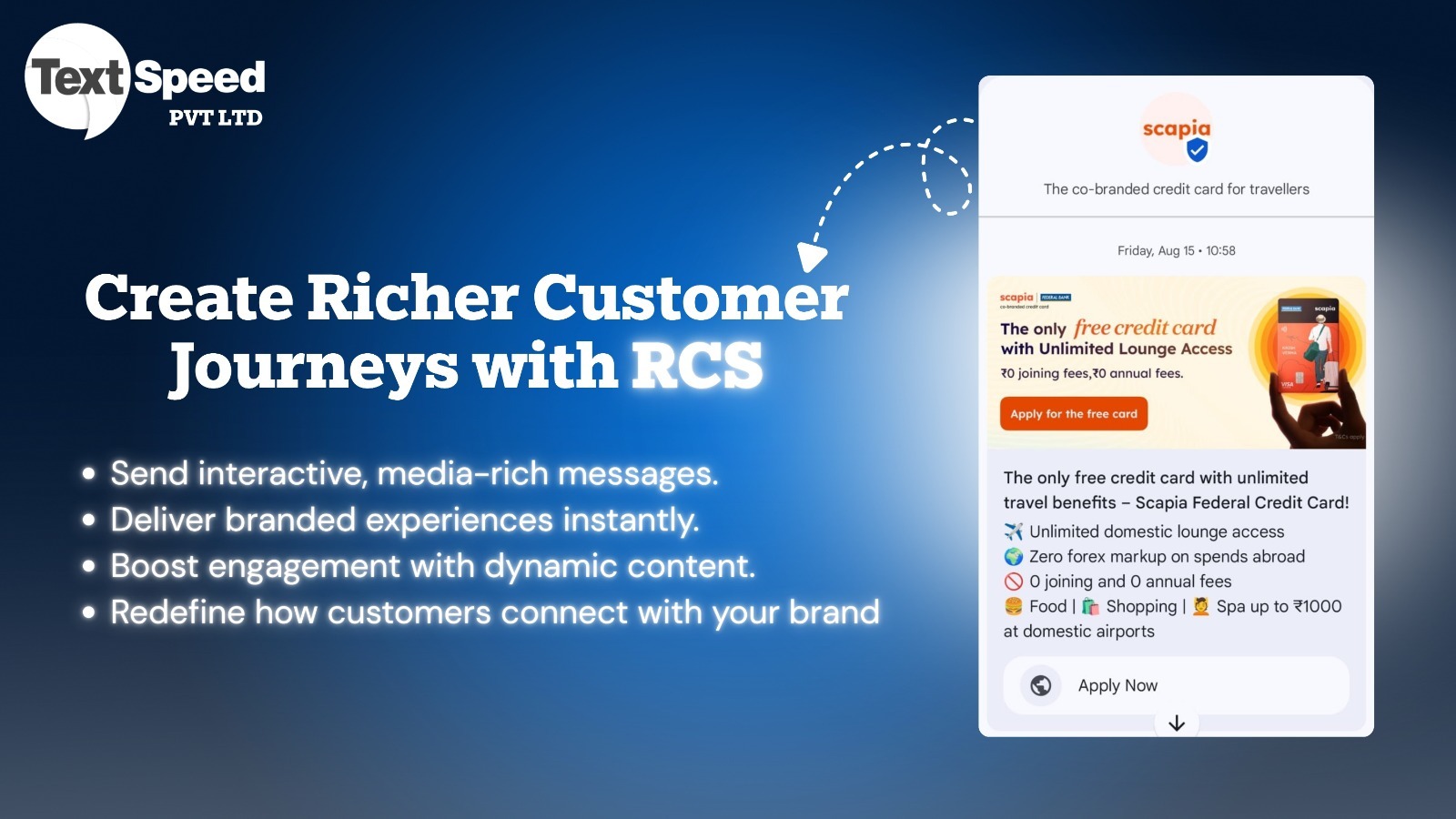Introduction
In the ever-evolving digital landscape, brands constantly seek ways to capture customer attention faster and more effectively. Traditional SMS campaigns, though reliable, often lack visual appeal and interactivity. Modern customers expect immersive experiences that go beyond plain text — and that’s exactly where the Rich Communication Service Message (RCS) comes in.
This next-generation messaging technology is revolutionizing mobile marketing by making brand communication more visual, dynamic, and measurable. In this blog, we’ll explore how rich communication service message technology is transforming campaigns, enhancing engagement, and bridging the gap between messaging and mobile apps.
What Is Rich Communication Service Message (RCS)?
At its core, the rich communication service message is an advanced form of SMS designed for today’s smartphones. It enables marketers to send visually enriched and interactive messages, complete with images, videos, buttons, carousels, and even payment options — all within the native messaging app.
In other words, RCS gives SMS a modern makeover. It combines the direct reach of text messaging with the interactivity of mobile apps — allowing users to browse, purchase, and engage without ever leaving their chat window.
Why Visual-First Mobile Campaigns Are the Future
In digital marketing, visuals speak louder than words. Customers are more likely to engage with content that appeals visually rather than text alone. Studies show that visual communication increases retention rates, boosts engagement, and creates emotional connections.
The rich communication service message empowers marketers to design campaigns that use strong visuals to create impact instantly. Imagine receiving a flight update not as a plain line of text but as a beautifully designed boarding pass image with interactive buttons to change your seat or track your flight. That’s the magic of RCS.
A visual-first campaign ensures your brand stands out from the clutter of plain messages. It transforms simple communication into an immersive brand experience.
Benefits of Using RCS for Marketing Campaigns
Interactive Messaging:
RCS supports features like quick-reply buttons, carousels, and clickable images. Customers can interact directly, making engagement natural and effortless.
Branded Experience:
Unlike SMS, RCS allows full brand customization. You can include logos, brand colors, and banners, turning each message into a mini landing page.
High Conversion Potential:
Since RCS messages can include visual CTAs like “Buy Now” or “Book a Demo,” conversion rates soar compared to traditional SMS.
Rich Media Capabilities:
Videos, product carousels, and GIFs make storytelling more powerful. For instance, a retail brand can showcase multiple product images in one message.
Enhanced Analytics:
RCS offers delivery, read, and interaction metrics. Marketers can track how users respond, optimizing future campaigns with precision.
Secure and Verified Communication:
Brands verified by telecom networks gain trust — each rich communication service message appears with a verified sender ID, ensuring customers recognize authentic communication.
How Rich Communication Service Message Campaigns Work
An RCS campaign begins just like an SMS campaign — with a database of customer contacts. However, instead of sending plain text, marketers design visually enriched templates using RCS platforms. These templates include graphics, interactive menus, and personalized offers.
When sent, users receive these messages in their default messaging app — no downloads required. This accessibility makes rich communication service message campaigns more seamless and scalable than app-based promotions.
For example:
- A restaurant can send a visual menu with a “Reserve Table” button.
- A travel agency can share a carousel of destination packages with one-tap booking.
- A bank can deliver secure account updates and quick-pay options.
RCS is designed to make mobile marketing smoother, smarter, and visually richer.
Industries Using RCS for Visual Campaigns
Retail and E-commerce:
Send interactive product showcases, flash sales, or discount coupons.
Travel and Hospitality:
Deliver boarding passes, trip reminders, or hotel booking confirmations with visuals.
Finance and Banking:
Share account alerts or investment opportunities with secure, visual updates.
Healthcare:
Send appointment reminders or test results in a professional and engaging way.
Education:
Notify students about admissions, webinars, and course updates with clickable links.
Creating a Strong RCS Campaign Strategy
To make the most of rich communication service message technology, marketers must plan campaigns carefully. Here are a few proven steps:
- Understand Your Audience: Know who you’re targeting and design visuals that resonate.
- Prioritize Personalization: Address customers by name, and send relevant offers.
- Use Strong CTAs: Encourage immediate action with visual buttons like “Buy Now” or “Learn More.”
- Test & Optimize: Analyze response rates and refine your visuals and messages.
- Integrate with CRM Tools: Combine RCS data with customer profiles for smarter retargeting.
The power of RCS lies in personalization and interactivity. The more relevant your campaign feels, the higher your engagement will be.
The Future of Mobile Marketing with RCS
The rich communication service message is not just a feature upgrade — it’s a revolution in brand communication. As more telecom networks and businesses adopt RCS, marketers will move from plain, static texts to dynamic, app-like experiences inside messaging apps.
This evolution will redefine how customers view mobile marketing — not as intrusive messages, but as helpful, visually appealing, and interactive touchpoints.
With the support of AI chatbots, analytics, and automation, the RCS ecosystem is expected to dominate mobile marketing in the coming years. It’s the bridge between traditional messaging and future-ready communication.
FAQs
Q1. What is a rich communication service message used for?
It’s used to send interactive and visually enriched messages that help brands engage users more effectively than plain SMS.
Q2. How does RCS differ from traditional SMS marketing?
RCS includes visuals, clickable buttons, and analytics, while SMS only supports text.
Q3. Can any business use RCS campaigns?
Yes, both small and large businesses can use RCS to improve engagement, conversions, and brand experience.
Q4. Is RCS secure?
Absolutely. RCS messages are verified and encrypted by telecom providers, ensuring secure communication.


